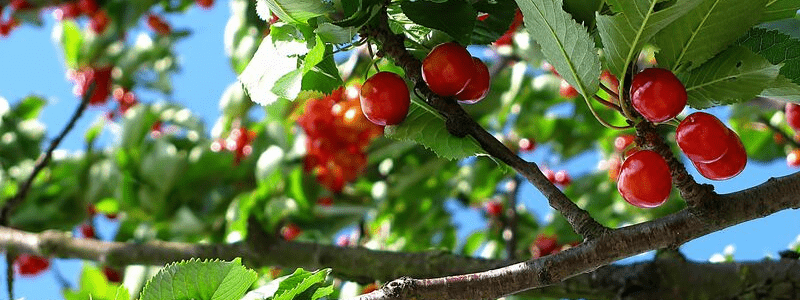August’s Colorful “Fashion” and Simple Living

The following article is reposted with permission from La Vista Ecological Learning Center:
Nature’s fashion turns to berries in August. Sumac fruits ripen to crimson. Wild black cherries ripen, starting out red before turning black-purple. Grey dogwoods’ bluish-white berries mellow through October. Wild grapes and elderberries’ purple coloring attract wildlife as they mature.
Year after year, these bushes and trees wear the same colors, and we never tire of seeing them. Repetition in nature is not boring! In fact, there is something wonderful about knowing what to expect as each season rolls around.
Human fashion, however, does not follow nature’s lead. Each season brings “fast fashion” a term referring to cheaply produced and priced garments, most likely made in developing countries by workers (sometimes even children) at poor wages and pitiful working conditions. They copy “high fashion” styles and distribute them quickly through stores to maximize on current trends.
The next time you are tempted to purchase this kind of clothing, consider these facts:
- The fashion industry is the second largest polluter in the world, only wreaking less environmental havoc than the fossil fuel industry.
- The fashion industry produces 20% of global wastewater and 10% of global carbon emissions–more than all international flights and maritime shipping.
- From the World Resources Institute we learn that “One garbage truck of clothes is burned or sent to landfills every second!”
- The average consumer bought 60% more clothes in 2014 than in 2000 but kept each garment for half as long.
What can we do?
- For a simpler, more sustainable life, imitate nature and enjoy wearing the same clothes as last season. Repeat year after year until they are worn out; then, recycle or re-purpose them.
- When you do make a clothing purchase, choose natural fabrics such as cotton, wool and silk over synthetics like polyester. Pay for long-lasting clothing.
- Exchange old clothing with friends or family.
- Give to Good Will Industries and other organizations.
- Share this information.
SOURCE: La Vista Ecological Learning Center
A ministry of the Missionary Oblates of Mary Immaculate
lavistaelc.org

Additional Reflection from the Catholic Climate Covenant:
“On your clothing is the life-blood of the innocent…” (Jeremiah 2:34)
“Thus says the LORD: For three crimes of Israel, and now four—I will not take it back—Because they hand over the just for silver, and the poor for a pair of sandals” (Amos 2:6)
The Old Testament context chiding our treatment of the poor and innocent for our clothes is at its core a chiding of how we are complicit in abuses to those who make our clothes. When we buy an inexpensive outfit, it may come at great cost to another living person created in the image of God and to God’s creation.
Think about how many pieces of clothing you have bought in the last 6 months. How much money did you spend? Where did you get it from? Where and how was it manufactured? How much clothing did you send to the landfill? Are there ways for you to be more conscious of your consumer habits when it comes to clothing? Does our clothing have the life-blood of the innocent? Does creation suffer due to our clothing choices and habits?
Would you like to learn more about the impact of the clothing industry on the environment? Here is a longer article from the US National Library of Medicine, National Institutes of Health: https://www.ncbi.nlm.nih.gov/pmc/articles/PMC1964887/
